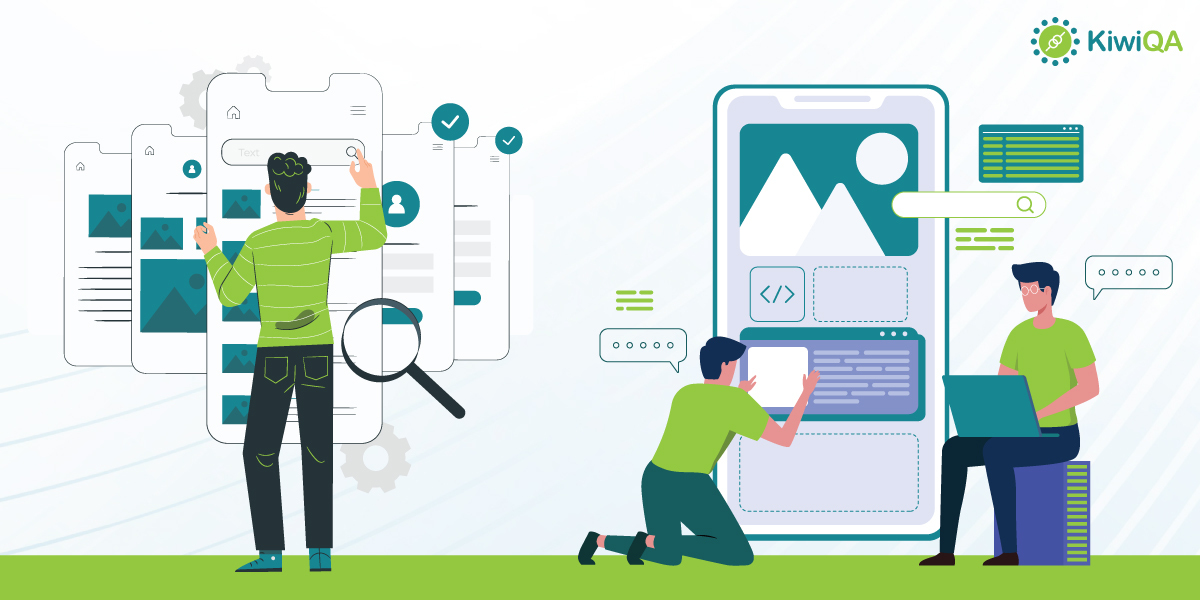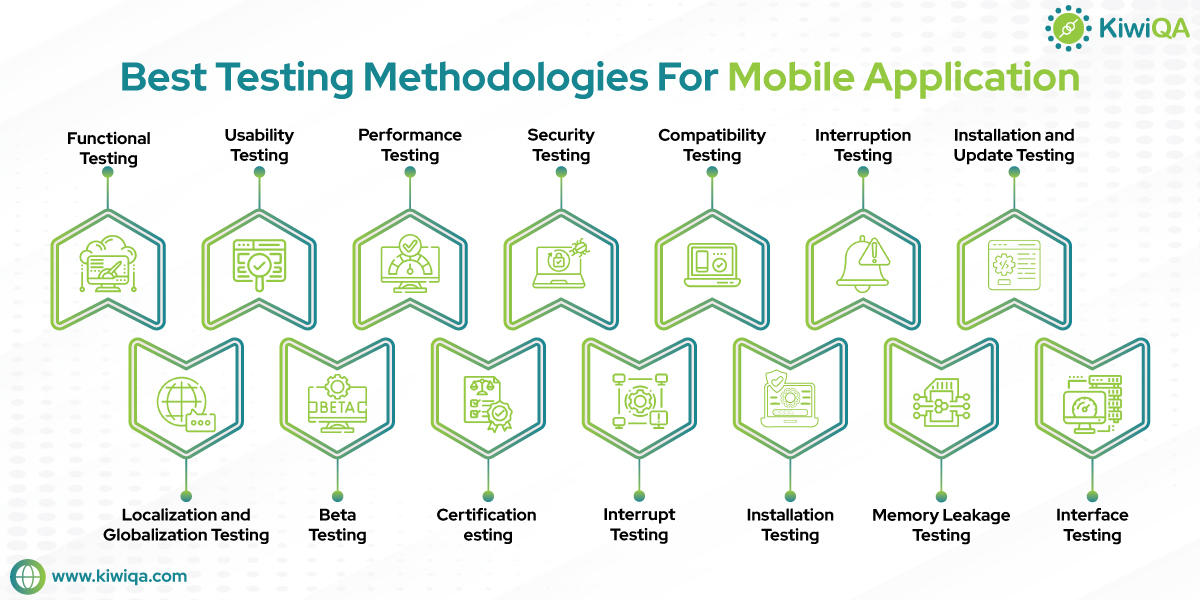There are more than 5.1 billion internet users worldwide who are active. The increasing usage of mobile devices is steadily increasing this value in the upcoming years. Every business wants to concentrate on making their mobile apps user-friendly. However, this comes with certain risks.
When an application doesn’t perform well, it negatively impacts your business & audiences. In order to get rid of all those issues, mobile application testing methods are necessary. In this blog, we have mentioned the best testing methodologies for mobile applications.
Why Mobile App Testing Approach is Essential?
It is recommended to hire a mobile app testing QA team during the development process to ensure that the application meets the client’s specifications. An ideal mobile application offers a satisfying experience to the users by running throughout the devices. If you want your app to stand among the top 30 applications, then mobile app testing methods are necessary.
In this highly competitive mobile application market, user satisfaction plays an important role. Taking an approach to mobile application testing techniques boosts the app’s performance. Performance testing aids in identify the weak points and refining resource allocation to enhance the app’s overall efficiency.
Best Testing Methodologies For Mobile Application
1. Functional Testing
Functional mobile app testing techniques verify that the app functioning correctly. This testing primarily centers on the app’s main functionality and flow. It ensures that every feature of the mobile application is responsive. No matter how good your UX design and the speed of your application are, if it can’t perform the desired tasks, it can’t keep customers satisfied.
Some other situations must be reviewed, such as whether the application is installed/launched perfectly on every device, whether the push notifications are rendered correctly, and whether the users can open the app perfectly. Some basic techniques of functional testing are Black box testing, exploratory testing, White box testing, regression testing, etc.
2. Usability Testing
Usability testing defines the user’s journey through an application. Through usability mobile application testing methodology, you can ensure that a user can smoothly access the application without any hassle. Once the application is launched, the QA testing team monitors the user-app interaction to evaluate the potential usability issues and address them.
Usability testing signifies how user-friendly your application is. The testing revolves around the customer’s experience and ways to improve them. Usability issues can negatively impact the team, product, and company. This testing is done with real devices and a genuine audience to fix the issues before the application is released.
3. Performance Testing
The performance mobile application testing approach defines how well a mobile application can work under a particular load. This assessment is essential to confirm that your software is operating correctly. During this evaluation, the examiners check device functionality, API/server responsiveness, and network efficiency. This procedure is mostly followed for OTT devices and live-streaming services.
Through performance testing, you can evaluate and fix the issues like app freezing and crashing. It also tracks the response time of the application, which makes sure that the app is responding quickly without any crashes. Performance testing is done in 2 ways: load testing and another is stress testing. Load testing is done to test the specific loading time, whereas stress testing evaluates how much workload an application can take.
4. Security Testing
Security testing is mostly done to focus on security-related issues, for example, authentication, authorization, SSL encryption, and all. Before the application is launched, the QA team of testers performs this technique to withstand the application against data loss prevention and protection against malicious attacks. Malicious attacks can disrupt the system and lead to a data breach.
User data security and privacy are the 2 most important factors you must consider before launching an application. To gain user’s trust and loyalty, you must eliminate all the potential vulnerabilities. There are several ways for mobile app security testing, which are static testing, network protocol testing, and dynamic analysis.
5. Compatibility Testing
We all know that there are multiple versions of operating systems, and different people are using different versions on their devices. This method guarantees that the app appears attractive and works flawlessly across all devices. Compatibility testing includes screen resolution testing, OS version compatibility, feature testing, and interrupt testing.
This is a non-functional testing type that ensures a mobile application works on various operating systems and devices. The testing confirms that the software works across various devices and browsers. It makes an application perform well with multiple networks and is compatible with different operating systems.
Also Read: Why Solid Mobile App Testing Strategy is Crucial?
6. Interruption Testing
Interruption testing methodologies for mobile application branches deal with how an application reacts when something interrupts and resumes the previous state. Interrupt testing allows you to identify how your application responds to disruptions. Interrupt testing applies to multiple application types, which are mobile, web, and standalone apps.
For example, you are in the middle of an online transaction, and suddenly, you receive a call that causes the online transaction to fail. In such scenarios, the mobile application isn’t able to handle the interruption; otherwise, users might face multiple challenges. In this overcrowded mobile application market, interruption testing is necessary for any mobile application.
7. Installation and Update Testing
Every user wants to install and uninstall to be smooth & trouble-free. The time for installation and uninstall can change your user experience. Therefore, before you launch any mobile app, make sure to ask the QA team testing experts for installation and update testing. We all know that the end-user has no time and patience for the long installation procedure.
The major goal of installation and uninstallation testing includes that the application must be downloaded and installed without any error. This testing ensures if the user wants, he/she must be able to successfully remove the app. You must verify all the third-party libraries and plugins, etc.
8. Localization and Globalization Testing
When you launch any application, make sure it is accessible and usable for different industries in order to ensure that Localization and globalization testing are necessary, from translating into multiple languages to converting the local currencies and adhering to local regulations and legal requirements.
Most of the time, consumers skip the application whose UI and graphic elements are misaligned with their culture. If you want to give a flawless experience to your clients, then your application should beat the competitors. Localization testing is a challenging process, but when you hire a QA team that has enough resources.
9. Beta Testing
Beta testing is for genuine users to use the product in the production environment to uncover bugs and issues before releasing the application. Beta testing is the final stage of testing prior to launching a product to the general public.The goal of beta testing is to uncover multiple bugs & usability challenges in a controlled setting. By following this testing procedure, you can ensure full security for the users. Beta tests are done in 2 ways: one is open tests, and another is closed tests.
10. Certification Testing
A certified test is done to offer the application quality assurance. When you are done with the development of the application and launch the application properly, then certification testing is necessary. When you hire certified testers, they offer certification for software quality.
Choose someone who has great knowledge and skill in a similar industry. There are lots of courses you can find on the internet that offer the certification program for this training. To meet the certification, your application must meet the eligibility criteria.
11. Interrupt Testing
Interrupt testing is the method of testing that is used for observing & evaluating the behavior and responses of software products and systems during and after interruption. This testing is done to identify the malfunctions and issues associated with the system that might evoke non-desirable & unexpected circumstances in the event of interruptions. This testing is done to identify the mobile application performance after the interruption.
Also Read: 2023’s Automation Tools for Mobile Application Testing
12. Installation Testing
Do you want to keep the installation and uninstallation of mobile applications smooth & reliable? If you don’t want to face any trouble during installation and uninstallation, then installation testing should be done when releasing the application. The final users are short on time and aren’t keen on waiting. The major goals of installation & uninstallation include giving power to the users to remove or uninstall the application smoothly. It guarantees that users can seamlessly download and install the app on their devices without issues.
13. Memory Leakage Testing
Memory leakage testing is done for continuous integration of systems. Using the automated capabilities of the CI system for conducting routine memory use analysis delivers the same benefits as it does for regular functional testing. The new code changes are immediately tested, making them easier to fix. In this testing technique, the CI system test reports transparency to the problem, which is often undetected until it’s too late.
14. Interface Testing
The UI/UX interface testing is part of app development procedures. This examination is conducted to assess the user’s experience with the application. This testing procedure is necessary to understand the primary test element, which is UI design, and how it is different and interacts with each other components. If you want to ensure your users a detailed insight about the application, then be sure to ask a few questions to your QA testing team.
From Code to Crowds: Test Your Mobile Application with Us!
So, this is all about what is testing methodology for mobile applications. mobile app testing services is a necessary part of the app development process, which ensures the application you launch is user-friendly and robust. The mobile app testing is mostly performed on genuine devices with real-time users. You can’t find any key to success in your business without testing your application before launching. If you’re looking to evaluate your mobile app, reach out to us now.








